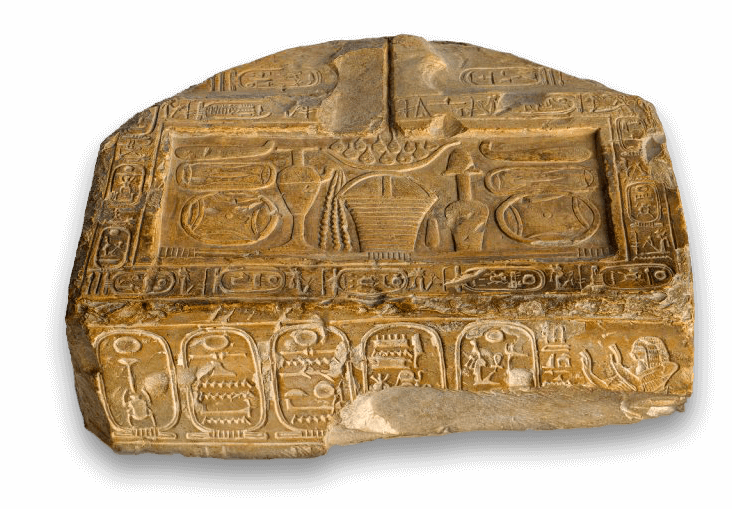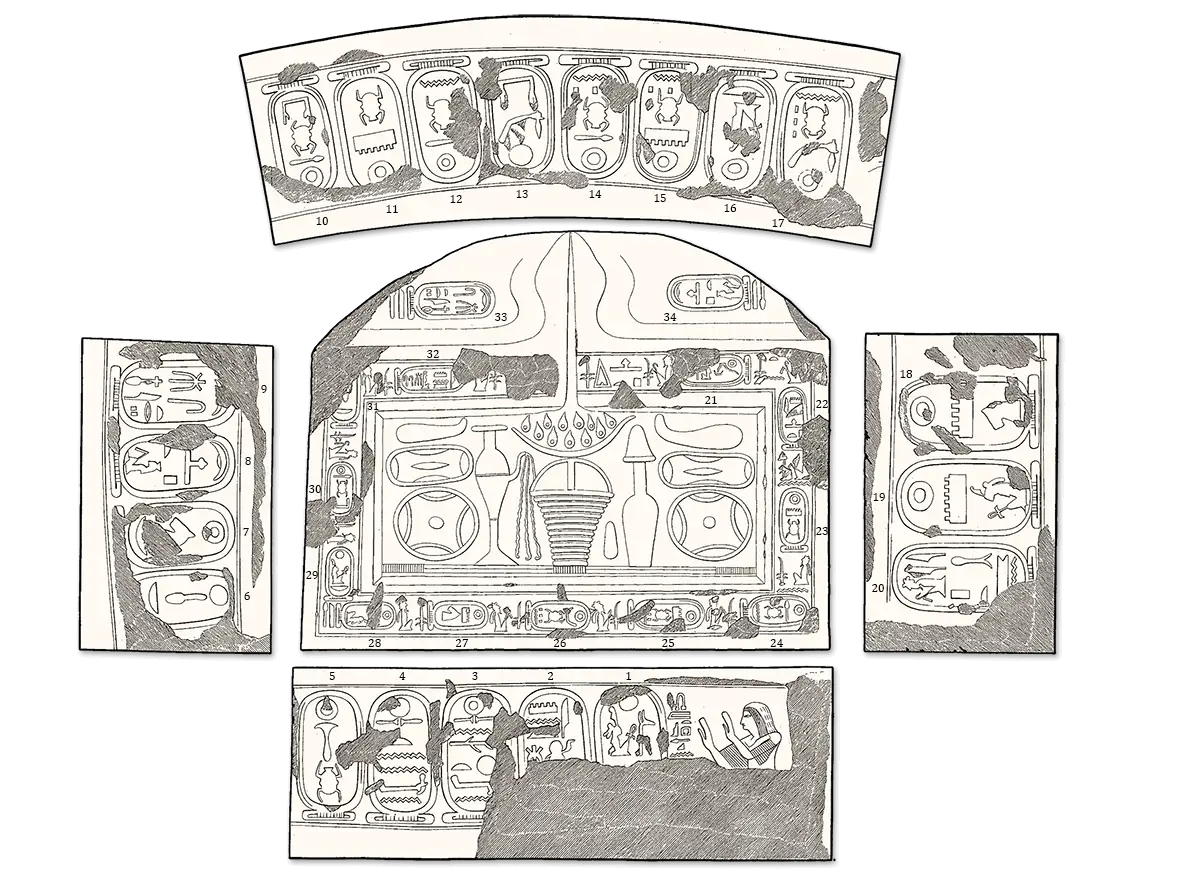The Marseille Stele, also known as The Offering Table of Qenhirkhopshef, was originally located in the Karnak Temple complex at Luxor. The top side used for offerings was made in the form of the hieroglyph
It was likely made in the reign of the Nineteenth Dynasty pharaoh Merenptah or his son Seti II. The 34 cartouches contain 30 royal names of 17 pharaohs, of which four are the (omitted here) names of Ahmose’s mother and wife (numbers 8, 9, 33, and 34). It now resides at the museum Musée d’Archéologie Méditerranéenne (Collection Clot-Bey, Inv. No. 204, Table d’offrandes de Qenherkhepeshef) in Marseille, France. Dimensions: 39.5 × 34 × 15 cm.
The offering starts on both sides of the run-off spout with the phrase


Note: Cartouche 14 contains Aa-kheperu-en-ra which must be a mistake/variant for Aa-kheperu-ra, the prenomen of Amenhotep II. The similar prenomen of Thutmose II (Aa-kheper-en-ra), is already present (12 and 24).
Bibliography
- Brugsch, Heinrich., 1859. Beschreibung einer Altägyptischen Opfertafel, Monatsberichte der Königlich Preußischen Akademie der Wissenschaften zu Berlin 1858. Berlin: 70-71.
- de Saulcy, Ernest., 1864. Étude sur la série des rois inscrits a la salle des Ancêtres de Thouthmès III, Mémoires de l’Académie nationale de Metz, S.2, Ed. 11.2. Metz: 301-309.
- Porter and Moss., 1964. Topographical Bibliography, I, part 2. Oxford: 743. Ken(hir)khopshef (a).
- Musée d’Archéologie Méditerranéenne:
(accessed February 2024)
- Redford, Donald B., 1986. Pharaonic king-lists, annals and day-books. Mississauga: 43.